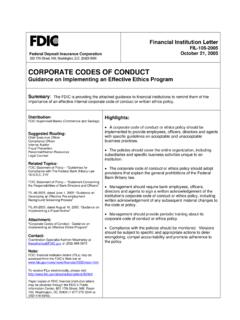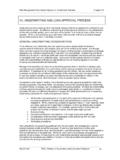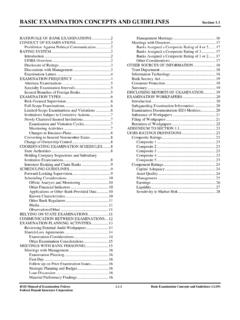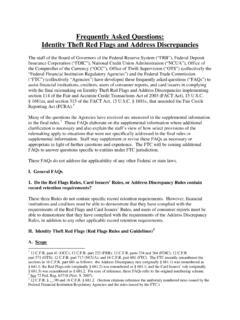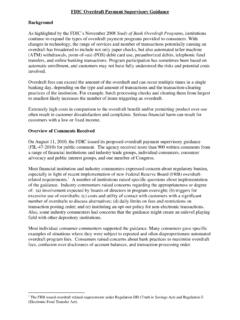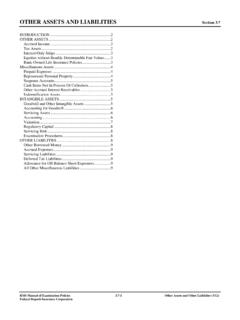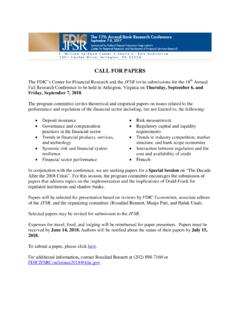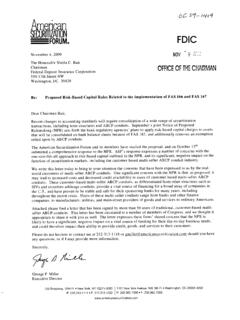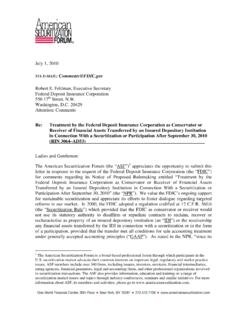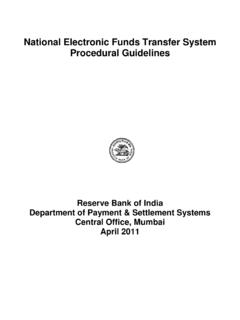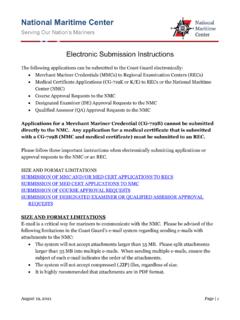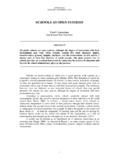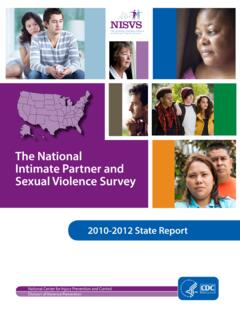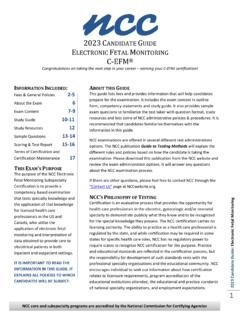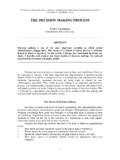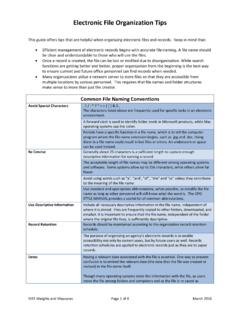Transcription of X-3.1 Other — Electronic Signatures in Global and National ...
1 X. Other Electronic Signatures in Global and National Commerce Act The Electronic Signatures in Global and NationalCommerce Act (E-Sign Act) Introduction The Electronic Signatures in Global and National Commerce Act (E-Sign Act), 1 signed into law on June 30, 2000, provides a general rule of validity for Electronic records and Signatures for transactions in or affecting interstate or foreign commerce.
2 The E-Sign Act allows the use of Electronic records to satisfy any statute, regulation, or rule of law requiring that such information be provided in writing, if the consumer has affirmatively consented to such use and has not withdrawn such consent. Subject to certain exceptions, the substantive provisions of the law were effective on October 1, 2000. Record retention requirements became effective on March 1, 2001. The E-Sign Act grandfathers existing agreements between a consumer and an institution to deliver information electronically. However, agreements made on or after October 1, 2000, are subject to the requirements of the E-Sign Act.
3 Summary of Major Provisions Consumer Disclosures Prior Consent, Notice of Availability of Paper Records Prior to obtaining their consent, financial institutions must provide the consumer, a clear and conspicuous statement informing the consumer: of any right or option to have the record provided or made available on paper or in a non Electronic form, and the right to withdraw consent, including any conditions, consequences, and fees in the event of such withdrawal; whether the consent applies only to the particular transaction that triggered the disclosure or to identified categories of records that may be provided during the course of the parties relationship; describing the procedures the consumer must use to withdraw consent and to update information needed to contact the consumer electronically; and informing the consumer how the consumer may nonetheless request a paper copy of a record and whether any fee will be charged for that copy.
4 See Section 101(c)(1)(B). Public Law 106-229, June 30, 2000. Hardware and Software Requirements; Notice of Changes Prior to consenting to the use of an Electronic record, a consumer must be provided with a statement of the hardware and software requirements for access to and retention of Electronic records. See Section 101(c)(1)(i). Whether the consumer consents electronically, or confirms his or her consent electronically, it must be in a manner that reasonably demonstrates the consumer can access information in the Electronic form that will be used to provide the information that is the subject of the consent.
5 See Section 101(c)(1)(C)(ii). If a change in the hardware or software requirements need to access or retain Electronic records creates a material risk that the consumer will not be able to access or retain subsequent Electronic records subject to the consent, a financial institution must: provide the consumer with a statement of (a) the revised hardware and software requirements for access to and retention of Electronic records, and (b) the right to withdraw consent without the imposition of any condition, consequence, or fee for such withdrawal; and again comply with the requirements of subparagraph (c) of this section.
6 See Section 101(c)(1)(D). Oral communications or a recording of an oral communication shall not qualify as an Electronic record. See Section 101(c)(6). Record Retention The E-Sign Act requires a financial institution to maintain Electronic records accurately reflecting the information contained in applicable contracts, notices or disclosures and that they remain accessible to all persons who are legally entitled to access for the period required by law in a form that is capable of being accurately reproduced for later reference. See Section 101(d). Agreements reached with consumers prior to October 1, 2000, to deliver information electronically are exempt from the requirements of Section 101(d).
7 However, for any agreements made with new or existing customers on or after October 1, 2000, the requirements of Section 101(c)(1) will supersede all Other consumer consent procedures relating to the use of Electronic disclosures set forth in Other regulations. Regulatory and Other Actions The consumer consent provisions in the E-Sign Act became effective October 1, 2000, and did not require implementing regulations. Nonetheless, on March 30, 2001, the Federal Reserve Board (FRB) adopted interim final rules (Interim Final Rules) and on November 9, 2007, the FRB adopted final FDIC Consumer Compliance Examination Manual January 2014 X 1 X.
8 Other Electronic Signatures in Global and National Commerce Act rules (Final Rules) establishing uniform standards for the Electronic delivery of federally mandated disclosures for five consumer protection regulations: Regulation B, Equal Credit Opportunity; Regulation E, Electronic Fund Transfers; Regulation M, Consumer Leasing; Regulation Z, Truth in Lending, and Regulation DD, Truth in Savings. The Final Rules provided guidance on the timing and delivery of Electronic disclosures. Pursuant to the Final Rules, Electronic disclosures should be made using a method best suited to the particular type of disclosure.
9 If the consumer uses Electronic means to open an account or request a service, the disclosures must be provided before the account is opened or the service is requested. In response to a consumer request, disclosures should be made available in a reasonable amount of time and may be Electronic if the consumer agrees. There are exceptions to the consumer consent requirement for electronically providing certain types of disclosures when the consumer is using Electronic means such as a home computer. Disclosures should be maintained on the website for a reasonable amount of time for consumers to access, view, and retain the disclosures.
10 The mandatory compliance date was October 1, 2008. Definitions Consumer The term consumer means an individual who obtains, through a transaction, products or services which are used primarily for personal, family, or household purposes, and also means the legal representative of such an individual. Electronic The term Electronic means relating to technology having electrical, digital, magnetic, wireless, optical, electromagnetic, or similar capabilities. Electronic Agent The term Electronic agent means a computer program or an Electronic or Other automated means used independently to initiate an action to respond to Electronic records or performances in whole or in part without review or action by an individual at the time or the action or response.
